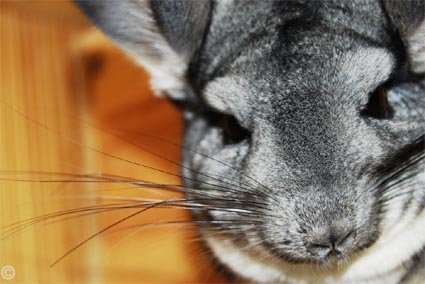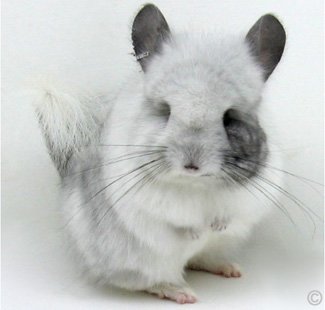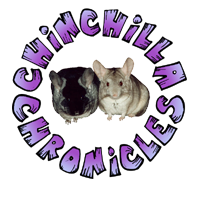
Chinchillas are professionally described as 'crepuscular' rodents. This means they are 'nocturnal' mammals who are highly active during twilight hours (from dusk to dawn).
Chinchillas are affected by the full moon and become more active on a bright moonlit night.
A chinchilla belongs to the Chinchillidae family and their original habitat is the Andes Mountain Range of South America where they live between 3,000 - 15,000 feet above sea level (914 - 4,572 meters).
The name Chinchilla means 'Little Chincha' after the indian tribe of The Andes who originally used to hunt the chinchillas for their fur, which they wore as clothing. The word 'rodent' is Latin for 'rodere' and means 'to gnaw'.
There are 3 different breeds of wild chinchilla, these being:
-
The Lanigera Chinchilla
-
The Brevicaudata Chinchilla
-
The Costina Chinchilla (now unrecognised in today's industry)
The Lanigera breed is the most commonly found chinchilla in the pet industry. They have a slimmer neckline and shoulders than the Brevicaudata and also have a slimmer head shape. Their tails are long, which gives the illusion that they are bigger than the Brevicaudata breed but in fact they are smaller. The Lanigera chinchilla can be found within the middle ranges of The Andes Mountains and their original colour mutation was light grey - brown.
The Brevicaudata chinchilla has a broad neckline, rounder ears and a shorter tail than their cousins giving them a stockier appearance. Their nose is blunt giving their face a 'puggish' look and their fur is slightly longer and more wavy than all other breeds. Pure Brevicaudatas have a brownish sheen to their fur, which is denser to help keep them warm in their original habitat. Brevicaudata chinchillas live in the highest and coldest altitudes of The Andes Mountain Range, 15,000 feet above sea level.
The Costina is the smallest size of the chinchillidae family. Although no longer recognised in the pet industry, they still existed so it shall be mentioned on this website. They have short fur, which is not as compact as the Lanigera or Brevicaudata breeds due to them not needing the extra warmth living in the lowest regions of the Andes Mountains of 3,000 feet about sea level. Costinas have a 'pointy' head shape leading to a 'rat-like' nose and have longer ears and tail than the other breeds. They are slightly more 'highly-strung' than their cousins and rarely found within the pet industry.
Since 'captive breeding' a new pedigree of chinchilla has evolved although still somewhat remote within the  pet industry. This new breed has been called The Royal Persian Angora Chinchilla.
pet industry. This new breed has been called The Royal Persian Angora Chinchilla.
The Royal Persian Angora Chinchilla (Angora for short) is estimated to have been developed around the early 1960's at a ranch in Fort Worth, Texas. They were originally considered for the pelt industry due to their quick maturation of 5 months (chinchillas usually hit maturity around 8-9 months) but were disregarded as a viable fur producer due to a problem with the fur being twice as long as other breeds and the clarity of the colour mutation proved difficult to produce. The Angora continued to be kept within selective chinchilla breeders of the pet industry and in 1997 two women purchased some of these chinchillas and spent a further 8 years heavily out-crossing the mutation to improve size, fur quality, temperament and subsequently named this breed of chinchilla The Royal Persian.
Although there are slight differences between the breeds of chinchilla, they all share the same characteristics:
- Bushy Tail
- Big Eyes
- Long Whiskers
- Large Ears
- Short Forelimbs
- Soft Fur
- Herbivore Eating Habits
Bushy Tail - A tail of a chinchilla can range between 3"-11" and covers up to one-third of a chinchilla's total body length (8"-15" average 12"). The tail is stiff and firm after 24 hours of birth and helps a chinchilla to  balance. WARNING - If the tail is grabbed by the tip is can easily break off!
balance. WARNING - If the tail is grabbed by the tip is can easily break off!
Big Eyes - All chinchillas commonly have big round eyes, which are under-developed due to being nocturnal. The colours vary from black, red and ruby.
Long Whiskers - Chinchilla whiskers are long due to their eyes being under-developed and can grow up to third of their body length. As the eyes are underdeveloped, a chinchilla will use its whiskers to help guide them around the environment creating a mental-map of where things are.
Large Ears - Chinchillas have huge ears that extend from the top of their head. They have a hearing range of 125 Hz -16 kHz (Miller, 1970; Heffner & Heffner, 1991) and quickly become startled by a sudden bang or noise.
Short Forelimbs - Chinchillas all have short forelimbs to help feed themselves and long hind legs to help jump great distances with agility. For such small creatures, chinchillas have been known to jump 6ft in to the air! They have 3 toes, 4 flexible digits for fingers and a thumb, which is severely underdeveloped but can hold and grasp food or even your finger.
Soft Fur - Chinchillas are well know for their long, soft, dense fur. To put into perspective the density of their fur, an average human has between 1-3 hairs per follicle whereas a chinchilla can have to up 80 hairs per follicle! Their coats are dense (1") to allow for survival in the harsh climates of The Andes Mountain Range and a chinchilla has developed with a unique defense mechanism called 'Fur Slip'. The density prevents the  invasion of fleas and parasites, which need to get to the skin to cause irritation.
invasion of fleas and parasites, which need to get to the skin to cause irritation.
Herbivore - All chinchillas are herbivores (vegetarians) feeding in the wild on seeds, roots, leaves, fruits, berries, bark, alfalfa and grass. In captivity their diet has been replaced with pellets, which consist of molasses, hulled oats, soybean, wheat, alfalfa, vitamins, minerals and coarse hay.
Other Chinchilla Facts:
- Predators - Owls, Snakes, Hawks, Mountain Lions, Foxes and ultimately the Pelt Trade.
- Life Span - Chinchillas can live up to 20 years although 10-12 is average.
- Weight - Baby chinchillas (kits) weigh 35 grams. A male chinchilla weighs approximately 500-600 grams and a female is much larger between 500 - 700 grams.
- Gestation Period - Average 111 days (can vary between 105-128 days) producing 2-3 offspring per litter - predominately twins/triplets. A female's estrus cycle is approximately every 30-40 days but can also vary between 16-69 days. Click here for a standard 111 day gestation chart.
- Teeth - A chinchilla has 20 teeth from birth (16 molars, 4 incisors - no canines), which continually grow throughout their lifetime.
- Heart Rate - Chinchillas have a heart rate of 100 beats per minute.
- Body Temperature - Between 96°-100°F (35.5°-38°C).
In the wild, chinchillas act like squirrels where they displace seeds as they are eating, which in turn helps  the environment produce new vegetation.
the environment produce new vegetation.
Chinchillas are fast, very very fast and love to leap and hop around when engaging in play. In the wild they live in colonies of 100+ and cohabiting chinchillas will nuzzle one another and chat away without inhibition. They are practically odourless and ultra sensitive in personality. They thrive on interactions from others of its kind and in captivity - human interaction.
Chinchillas are intelligent, inquisitive, loveable bundles of fluff with an individual character and gentle personality if treated correctly!



 pet industry. This new breed has been called The Royal Persian Angora Chinchilla.
pet industry. This new breed has been called The Royal Persian Angora Chinchilla. balance.
balance.  invasion of fleas and parasites, which need to get to the skin to cause irritation.
invasion of fleas and parasites, which need to get to the skin to cause irritation. the environment produce new vegetation.
the environment produce new vegetation.